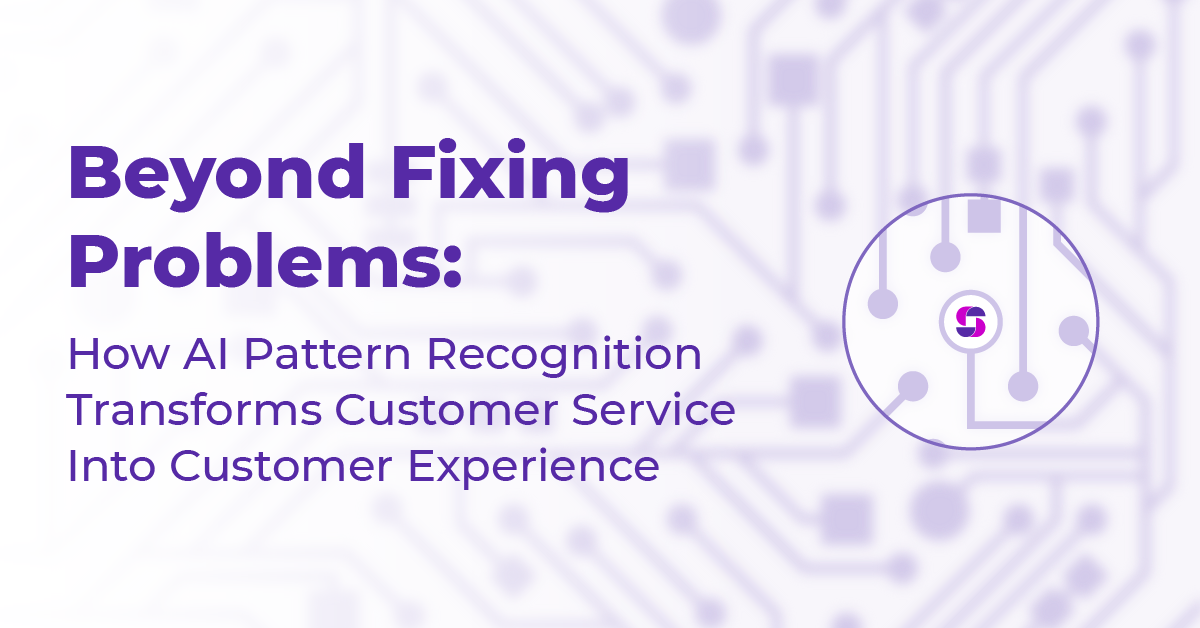Truly hyperpersonalising the digital customer care experience isn’t easy, but it’s something that has to be addressed sooner rather than later. Consumers are familiar with personalisation in other industries – online retail, travel, social networking – and are coming to expect similar levels of personalisation from other service providers. How can this be achieved, given the technical barriers faced by providers and the proliferation of middleware?
Hyperpersonalisation relies entirely on the data available and the application of that data during each customer interaction.
Hyperpersonalisation relies entirely on the data available and the application of that data during each customer interaction. Over the years, organisations have invested in middleware with a view to building out the dream ecosystem. More often than not, we end up with a plethora of horizontal solutions that can do their job, but don’t play nicely together. What is needed is a vertical platform that, as well as having the capabilities to observe customer behaviour, can integrate with other tools in the ecosystem to gather and use customer data to hyperpersonalise the digital customer experience. In order to achieve this hyperpersonalisation and fulfil core business objectives, the RTIM deployed should be capable of dynamically applying decisioning taking into account the customer’s environment and the context they are currently in, their technical savviness and enthusiasm toward digital channels, and any historical relationship and activities the customer has undertaken.
Real-Time Interaction Management
Real-Time Interaction Management isn’t a new thing – the concept has been knocking around for almost a decade. Tracked and championed by Forrester, the use cases for RTIM have grown over the years wherever organisations have had to orchestrate customer journeys en masse.
Hyperpersonalisation is about so much more than taking aspects of what is happening for a given customer and delivering an experience to them that takes into account that input.
Personalisation that meets consumer demands, creates repeat engagement and solves the customers queries is multifaceted. Those developing the digital strategy need to be supported by technology that can gather data on premise, understand the context and diagnostics of the customer environment whilst also adapting the experience in line with customers’ care history, digital patience and aptitude. These considerations must not only influence the content of the experience delivered to the customer, but also the decisioning pathway and triage routing.
Those aspects could include:
- Context & Environment
Does your digital support consider real-time diagnostics, the environment and the circumstances the user finds themselves in? - Psychological & Behavioural
Does it take the user on a one-size-fits-all linear path to resolve issues, regardless of their technical savviness or digital enthusiasm? - History & Relationship
Is decisioning logic the same for every customer, regardless of the frequency with which they have asked the same question? Are those customers with high churn propensity delivered the same digital experience as those with a low CLV?
Gathering data to support these sorts of questions is the first challenge. How would you gather environmental, historical and aptitude data, and how would you store and utilise it? If it heads into a fixed model and is deployed into a large consumer base, your chances of success are pretty much zero. So, the second challenge is managing and utilising the data in a valuable and productive way – in a dynamic way.
The challenge is in managing and utilising the data in a useful and productive way – in a dynamic way.
Heuristic Bets and Dynamic Decisioning
The key here is that the platform upon which the experiences are being built is dynamic. This means that the platform is continuously learning and using the latest data in the branch logic and decisioning. Meaning that it can adapt on-the-fly to new information and data, changing the experience for the customer dynamically.
When setting up the digital customer experiences, you always place a set of heuristic bets on the table, based on behavioural studies and data analysis:
“I think [this] sort of person in [that] scenario would ask [these] sorts of questions.”
The questions won’t be machine-learned from day one, and they won’t all be right the first time, but the platform continues to learn from the customer and reapplies them into a dynamic pipeline, which feeds decisioning. If this functionality isn’t available, providers lose their agility and the ability to hit the constantly moving customer target.
A requirement is an engine to use that data properly, to automatically accept, process and utilise the insights in real-time.
The Road to Next Gen Personalisation
So what is required to achieve this next generation of personalisation?
The first thing required is a set of real-time measurements about the customer and their environment: personal behavioural characteristics, technical and personal environment, history and level of technical confidence.
The second requirement is an engine to use that data properly, to accept, process and utilise the insights in real-time automatically. The authoring tool will need to have the ability to indicate how effectively the author has used personalisation, with easy editing capabilities. There will also need to be a solid analytics backbone to give providers visibility of the customer, as well as aggregated data related to journey and resolution performance.
Book a tour to discover how Sweepr’s 7 Principles of Personalisation help CSPs hyperpersonalise digital customer care experiences.

